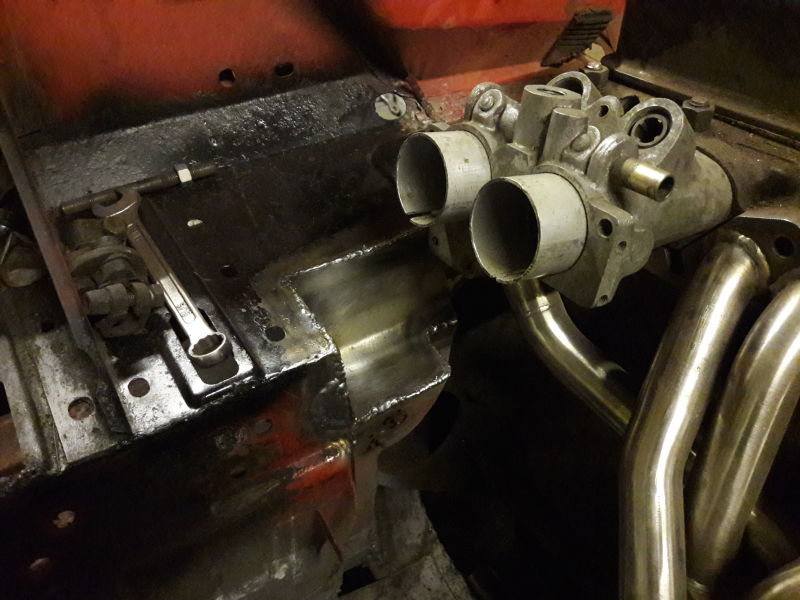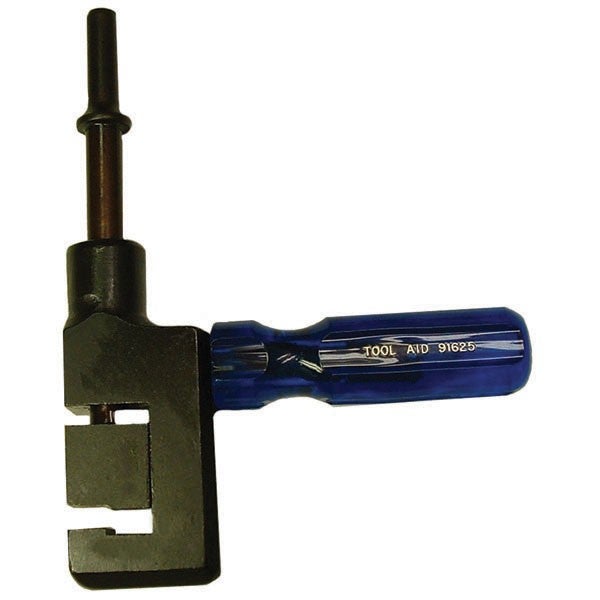 "BiTurbo228 - Dr Frankenstein of Spitfires" (biturbo228)
"BiTurbo228 - Dr Frankenstein of Spitfires" (biturbo228)
10/18/2017 at 06:28 ē Filed to: spit6
 14
14
 3
3
 "BiTurbo228 - Dr Frankenstein of Spitfires" (biturbo228)
"BiTurbo228 - Dr Frankenstein of Spitfires" (biturbo228)
10/18/2017 at 06:28 ē Filed to: spit6 |  14 14
|  3 3 |

Should be done in no time :) I might take the little corner off in case I need to lower the inlet manifolds (testing if I do is the next job).



I have however discovered clearance issues with the pending exhaust along the underside of the chassis (not much space between gearbox and chassis). I could just run the exhaust lower, but I though iíd cut off the flange that runs on the inner side of the chassis and reweld the corners together just in case I need the extra 1/2" clearance. Be easier now than after itís painted.
Also, recording for posterity that after four years and when the stars align I can lay down a decent weld on thin tin ;)

 RamblinRover Luxury-Yacht
> BiTurbo228 - Dr Frankenstein of Spitfires
RamblinRover Luxury-Yacht
> BiTurbo228 - Dr Frankenstein of Spitfires
10/18/2017 at 09:04 |
|
I can lay down a decent weld on thin tin
The trick to it, as I found out when clearancing a bulkhead myself, is to use very small wire, properly mated or overlapped edges, and not to be a bloody idiot and use galvanneal steel to do it with. Flash-burning zinc has a way of wrecking any temperature control you might have...
 BiTurbo228 - Dr Frankenstein of Spitfires
> RamblinRover Luxury-Yacht
BiTurbo228 - Dr Frankenstein of Spitfires
> RamblinRover Luxury-Yacht
10/18/2017 at 09:45 |
|
Tick on the small wire front (just worked out that a slightly slower wire speed helps though). Definitely guilty of not being quite as careful with mating gaps as I should be, which I think is a lot of the problem.
Can also empathise with the Ďbloody galvanised steelí thing after welding the wheelarches on my mateís Peugeot 106. A combination of that and the metal itself definitely being less than 1mm thick (honestly, theyíre made of tinfoil) made it really bloody tricky.
Have used it to my advantage with making captive nut plates though ;) heats up the nut to roughly the same temperature as the plate youíre welding it to even though itís much thicker...
 RamblinRover Luxury-Yacht
> BiTurbo228 - Dr Frankenstein of Spitfires
RamblinRover Luxury-Yacht
> BiTurbo228 - Dr Frankenstein of Spitfires
10/18/2017 at 10:19 |
|
Galvanized steel at 20GA is nearly exactly a millimeter thick, 22GA is thinner still. Most auto body work is 18, 20, or 22, with a few exceptions going thinner. The bulk of my Galaxie is 20/22, the bulk (double meaning intended) of the Lincoln is 18/20 with some 16(!) thrown in. Iíve gotten a sheet of 22GA to finish the Ranchero up with and repair the Galaxie trunk, which is ungalvanized, .75 millimeter thick.
In truth, there was some old thing I patched up with 28GA (less than half millimeter), and that was arguably easier to weld than the galvanneal 20GA...
Iíve also gotten an offset tool for making an edge to seam/overlap the lot - no more butt welds anywhere I donít need them.
